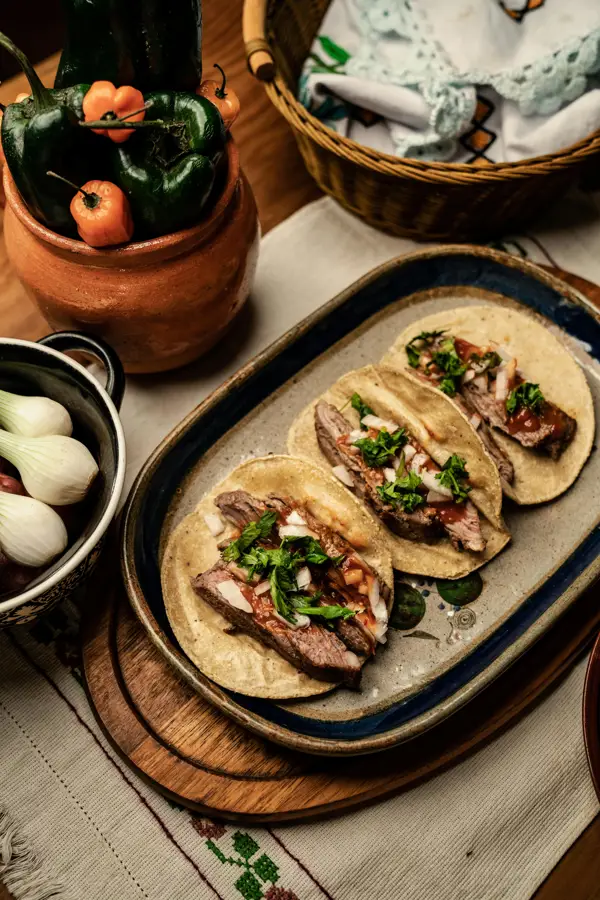Burritos, a culinary cornerstone of Mexican cuisine, boast a surprisingly rich and debated history. While pinpointing their precise origin is difficult, most culinary historians agree that burritos emerged in northern Mexico, likely in the late 19th or early 20th century. The word burrito itself, meaning little donkey, is thought to have arisen from the burrito’s resemblance to the small blankets used to carry donkeys’ burdens. Early versions were likely simple affairs, utilizing readily available ingredients like beans, rice, and perhaps some leftover meat – a practical, portable meal for laborers and everyday people.
The burrito’s journey from humble beginnings to global phenomenon is a fascinating one. Initially confined to regional Mexican fare, the burrito’s popularity exploded in the United States during the mid-20th century, fueled by the growth of Mexican-American communities and a burgeoning appetite for flavorful, affordable food. Today, burritos are a ubiquitous presence, transcending cultural boundaries and adapting to countless variations. Statistics show that the burrito market in the US alone is a multi-billion dollar industry, demonstrating its enduring appeal across demographics. This widespread adoption also speaks to the burrito’s inherent versatility; it’s a blank canvas for culinary creativity, readily accommodating diverse tastes and dietary preferences.
The cultural significance of the burrito extends beyond its economic impact. It represents a fusion of cultures, a testament to the power of food to bridge divides and build communities. The adaptation of the burrito into vegan cuisine reflects a growing awareness of ethical and environmental concerns, demonstrating how traditional dishes can be reimagined to align with modern values. Interesting facts include the existence of regional variations across Mexico and the US, each with its own unique spin on fillings and preparation methods. From simple street food to gourmet creations, the burrito’s story is one of adaptability, innovation, and enduring popularity. This recipe focuses on creating a delicious and satisfying vegan burrito, demonstrating the versatility and deliciousness of plant-based cuisine within this beloved food tradition.
Ingredients and Measurements
This recipe makes approximately 6 large vegan burritos. Adjust ingredient quantities as needed to suit your desired number of servings. Accurate measurements are crucial for optimal flavor and texture. Use a kitchen scale for the most precise results, especially when measuring dry ingredients like rice and beans.
For the Rice and Beans:
- 1 cup long-grain white rice (or brown rice for a nuttier flavor, adjust cooking time accordingly)
- 2 cups vegetable broth (low sodium preferred)
- 1 (15-ounce) can black beans, rinsed and drained thoroughly. Thoroughly rinsing the beans is essential to remove excess sodium and starch.
- 1 (15-ounce) can pinto beans, rinsed and drained thoroughly
- 1 tablespoon olive oil
- 1 teaspoon chili powder
- 1/2 teaspoon cumin
- 1/4 teaspoon smoked paprika (optional, for a deeper smoky flavor)
- Salt and pepper to taste
For the Burrito Filling:
- 1 large onion, chopped
- 1 red bell pepper, chopped
- 1 green bell pepper, chopped
- 1 (10-ounce) package frozen corn, thawed
- 1 tablespoon olive oil
- 1 teaspoon garlic powder
- 1/2 teaspoon oregano
- 1/4 cup chopped cilantro (optional, fresh cilantro adds a vibrant flavor)
- 1/4 cup salsa (your preferred heat level)
For Assembly:
- 12 large flour tortillas (burrito-sized)
- Your favorite vegan toppings: Consider offering a variety to cater to different preferences. Suggestions include vegan sour cream, guacamole, shredded lettuce, diced tomatoes, and hot sauce.
Professional Tip: For perfectly warm tortillas, heat them briefly in a dry skillet over medium heat or in the microwave wrapped in a damp paper towel for about 15-20 seconds. This makes them more pliable and less likely to tear during burrito assembly. Avoid over-heating the tortillas, as this can make them brittle.
Note: Feel free to substitute ingredients based on your preferences and dietary needs. For example, you can use different types of beans, add other vegetables like mushrooms or zucchini, or use different spices to create your own unique flavor profile.
Mise en Place (Prep Work)
Before you even think about heating your pan, meticulously prepping your ingredients is key to making delicious and stress-free vegan burritos. This process, known as mise en place, ensures efficiency and prevents last-minute scrambling. Proper preparation is the foundation of a great meal.
Start with the rice. For this recipe, we’ll use 1 cup of long-grain white rice. Rinse the rice thoroughly under cold water until the water runs clear. This removes excess starch and prevents sticking. Then, cook the rice according to package directions, usually a 1:2 ratio of rice to water. While the rice cooks, you can move on to the other ingredients. Perfectly cooked rice is fluffy and separate, not mushy.
Next, prepare your beans. We’ll use 1 (15-ounce) can of black beans, rinsed and drained. For extra flavor, consider lightly mashing about ⅓ of the beans with a fork. This adds a creamy texture to the filling. If using dried beans, soak them overnight and then cook them until tender. Don’t skip rinsing the canned beans; it removes excess sodium and improves the overall taste.
Now for the vegetables. Finely chop ½ a medium red onion, 1 cup of bell peppers (any color, or a mix!), and 2 cloves of garlic. The smaller the chop, the better the distribution of flavor throughout the burrito. Consistent chopping ensures even cooking and a pleasant mouthfeel. If you have fresh corn, cut off the kernels from 1 ear of corn. Frozen corn works well too, just make sure it’s thawed.
Prepare your salsa. Use your favorite store-bought salsa, or make your own! About 1 cup of salsa is ideal for this recipe. If making your own, remember to chop your tomatoes, onions, and cilantro finely. Fresh, homemade salsa adds an unparalleled level of flavor.
Finally, gather your other ingredients: 1 tablespoon of chili powder, ½ teaspoon of cumin, ¼ teaspoon of smoked paprika, salt, and pepper to taste. Have your burrito-sized tortillas (about 10-12, depending on size) ready and warmed slightly, either in a dry skillet or microwave. Having everything within easy reach minimizes cooking time and maximizes efficiency.
With all your ingredients prepped and ready, you’re now perfectly positioned to assemble and cook your delicious vegan burritos, ensuring a smooth and enjoyable cooking experience.
Rice Preparation
The perfect rice is crucial for a delicious vegan burrito. We’ll be using long-grain white rice, which holds its shape well and doesn’t get mushy, a key factor for a satisfying burrito filling. For this recipe, we’ll be making approximately 3 cups of cooked rice, enough for four generous burritos.
Start with the right ratio: For every 1 cup of uncooked long-grain white rice, you’ll need approximately 2 cups of water. This ratio ensures perfectly cooked rice every time. For our 3-cup target, we’ll start with 1 ½ cups of uncooked rice.
Rinse the rice: Before cooking, rinse the rice under cold water until the water runs clear. This removes excess starch, which can lead to sticky rice. This rinsing step is crucial for achieving fluffy, separate grains.
Combine and cook: In a medium saucepan, combine the 1 ½ cups of rinsed rice and 3 cups of water. Bring the mixture to a boil over high heat. Once boiling, reduce the heat to the lowest setting, cover the saucepan tightly with a lid, and simmer for 15-18 minutes, or until all the water is absorbed. Do not lift the lid during cooking; this will release steam and prevent the rice from cooking evenly.
Fluff and cool: Once cooked, remove the saucepan from the heat and let the rice stand, covered, for 5-10 minutes. This allows the steam to fully cook the rice and makes it fluffier. After resting, gently fluff the rice with a fork to separate the grains. Allow the rice to cool slightly before adding it to your burrito filling. Overly hot rice will wilt your other ingredients.
Flavor boost (optional): For extra flavor, consider adding a teaspoon of salt and a tablespoon of olive oil to the rice while it simmers. You can also experiment with adding other spices like cumin, chili powder, or smoked paprika for a more complex flavor profile in your burrito filling. Remember to adjust seasoning to your preference.
Storage: Leftover cooked rice can be stored in an airtight container in the refrigerator for up to 3-4 days. When reheating, add a splash of water or broth to prevent it from drying out.
Bean Preparation (if using dried)
Dried beans offer a significantly more economical and flavorful base for your vegan burritos compared to canned. However, they require proper preparation to achieve optimal texture and taste. This section guides you through the process.
Choosing your beans: For burritos, we recommend pinto beans, black beans, or a delicious blend of both. Start with 1 cup of dried beans. Rinse them thoroughly under cold water to remove any debris or small stones.
Soaking (optional but recommended): Soaking significantly reduces cooking time and improves digestibility. Place the rinsed beans in a large bowl and cover them with at least 3 inches of cold water. Soak for at least 6-8 hours, or preferably overnight. This allows the beans to rehydrate fully, resulting in a more even cooking process.
Cooking the beans: After soaking (or if skipping the soaking step), drain the beans and place them in a large pot. Add about 6 cups of fresh water. Bring the water to a boil, then reduce the heat to low, cover the pot, and simmer gently. Cooking time varies depending on whether you soaked the beans: Soaked beans typically take 45-60 minutes to become tender, while unsoaked beans may require 1.5 to 2 hours. Check for doneness by mashing a bean against the side of the pot; it should easily break down.
Seasoning your beans: Once the beans are cooked, drain any excess water. You can now season them to your liking. A simple and effective seasoning blend includes: 1 teaspoon of chili powder, ½ teaspoon of cumin, ½ teaspoon of garlic powder, ¼ teaspoon of onion powder, and a pinch of salt and pepper. Adjust seasonings to your preference. For a richer flavor, you can sauté the spices in a little olive oil before adding them to the beans.
Important Note: Do not add salt to the beans during the initial cooking process, as this can harden them and prevent them from cooking properly. Add salt only at the end, once the beans are fully cooked.
Mashing (optional): For a more textured burrito filling, you can leave the beans whole or slightly mashed. For a smoother consistency, use a potato masher or immersion blender to partially mash the beans. Avoid over-mashing, as you still want some texture in your filling.
Now your delicious, homemade beans are ready to be incorporated into your amazing vegan burritos!
Vegetable Preparation and Cooking
The success of your vegan burritos hinges heavily on perfectly prepared vegetables. We’ll focus on creating a vibrant and flavorful mix, but feel free to adapt to your preferences and what’s in season. For this recipe, we’ll use 1 cup of chopped bell peppers (any color!), ½ cup chopped red onion, 1 (15-ounce) can of black beans, rinsed and drained, and 1 cup of corn (either frozen or fresh, if using fresh, cut the kernels from the cob).
Begin by prepping your vegetables. Wash all vegetables thoroughly. For the bell peppers and red onion, remove the stems and seeds from the peppers and peel off any papery outer layers from the onion. Dice the peppers into ½-inch pieces and finely chop the red onion. This ensures even cooking and prevents large chunks from overpowering the burrito. If using fresh corn, cut the kernels off the cob using a sharp knife.
Cooking the Vegetables: The best method is to sauté the vegetables for a flavorful base. Heat 1 tablespoon of olive oil in a large skillet over medium heat. Add the chopped red onion and sauté for about 3-5 minutes, until softened but not browned. Then, add the bell peppers and cook for another 5-7 minutes, stirring occasionally, until they are tender-crisp. Don’t overcook the peppers, as they’ll become mushy.
Incorporating the Beans and Corn: Once the peppers and onions are cooked, add the rinsed and drained black beans and corn to the skillet. Stir to combine everything evenly. Cook for another 2-3 minutes, allowing the beans and corn to heat through. Season generously with ½ teaspoon of chili powder, ¼ teaspoon of cumin, a pinch of smoked paprika, and salt and pepper to taste. Adjust the seasoning according to your preference. You can add a dash of your favorite hot sauce for extra heat.
Important Tip: For optimal flavor, consider adding a squeeze of lime juice at the end. This brightens the vegetable mixture and adds a wonderful acidity that balances the richness of the other burrito ingredients. Also, taste and adjust seasoning as needed before using in your burritos. Don’t be afraid to experiment with different spices and herbs! Adding a teaspoon of oregano or a sprinkle of cilantro can add extra depth of flavor.
Once your vegetable mixture is cooked and seasoned to perfection, set it aside to cool slightly before filling your burritos. This prevents the filling from making the tortillas soggy.
Filling Assembly
With your delicious vegan burrito fillings prepared (refer to previous sections for recipes!), it’s time to assemble your masterpieces. The key to a satisfying burrito is a balanced and flavorful filling that won’t fall apart when you bite into it. We recommend aiming for approximately 1.5 to 2 cups of filling per burrito, depending on the size of your tortillas.
Begin by warming your large flour tortillas. You can do this in a dry skillet over medium heat for about 30 seconds per side, or in the microwave wrapped in a damp paper towel for 15-20 seconds. Warming the tortillas makes them pliable and prevents cracking, leading to a more enjoyable eating experience.
Lay your warmed tortilla flat on a clean work surface. Start by adding a layer of your cooked rice, spreading it evenly about 1/3 of the way up from the bottom edge of the tortilla. Aim for approximately ½ cup of rice per burrito. This provides a base for the other ingredients and helps absorb excess moisture.
Next, distribute your beans evenly over the rice. We suggest about ½ cup of black beans or pinto beans, or a mix of both. Avoid overloading this layer as too many beans can make the burrito soggy. If using refried beans, ensure they’re spread thinly and evenly.
Now for the star of the show: your flavorful vegetables! Add approximately ½ cup of your sautéed vegetables (onions, peppers, etc.) on top of the beans. A colorful and varied mix of vegetables adds both visual appeal and nutritional value. Consider adding some chopped cilantro or other fresh herbs at this stage for an extra burst of flavor.
Finally, top with your desired amount of vegan cheese shreds (about ¼ cup), salsa, and your favorite hot sauce. Don’t be shy with the flavor! However, remember that too much liquid can make the burrito difficult to roll and eat. A good rule of thumb is to add enough to complement the other ingredients without making it overly wet.
To assemble, lift the bottom edge of the tortilla over the filling, then fold in the sides, and tightly roll the burrito from the bottom up. Ensure the filling is snugly contained within the tortilla to prevent spills and maintain its structural integrity.
You can now enjoy your delicious vegan burrito immediately, or wrap it in foil or parchment paper for later. Remember to store any leftover burritos in the refrigerator and consume them within 2-3 days for optimal freshness.
Recommendations
For the most delicious vegan burrito experience, we highly recommend experimenting with different fillings to find your perfect combination. Consider adding a dollop of vegan sour cream or cashew cream for extra richness and creaminess. A squeeze of lime juice brightens the flavors beautifully. Don’t be afraid to get creative! Adding roasted sweet potatoes, sautéed mushrooms, or black beans can significantly enhance the flavor profile.
Serving suggestions are plentiful! These burritos are fantastic on their own, but they also pair wonderfully with a side of vibrant salsa, guacamole, or a simple salad with a light vinaigrette. For a complete meal, consider serving them with Mexican rice and refried beans. The contrasting textures and flavors create a truly satisfying culinary experience. For a heartier meal, serve with a side of tortilla chips and your favorite spicy salsa.
Storage is key to maintaining freshness. Leftover burritos should be stored in an airtight container in the refrigerator for up to 3 days. To reheat, simply microwave for 1-2 minutes, or heat in a skillet over medium heat until warmed through. For optimal flavor and texture, we recommend reheating gently to avoid overcooking the fillings. Freezing is also an option; wrap individual burritos tightly in plastic wrap, then place them in a freezer-safe bag for up to 3 months. Thaw overnight in the refrigerator before reheating.
Nutritional information (per burrito, approximate values will vary based on ingredients): Calories: 450-600; Protein: 15-20g; Fat: 15-25g; Carbohydrates: 60-80g; Fiber: 10-15g. Please note that these are estimates and may vary depending on the specific ingredients and quantities used. For a more precise nutritional analysis, use a nutrition calculator with your exact recipe details.





